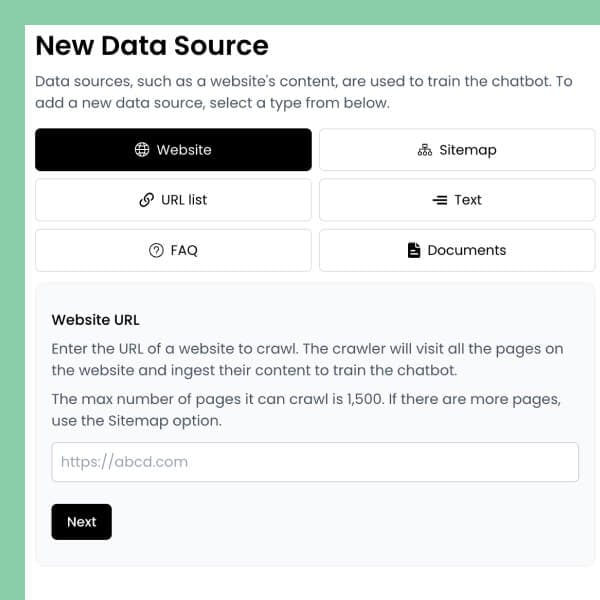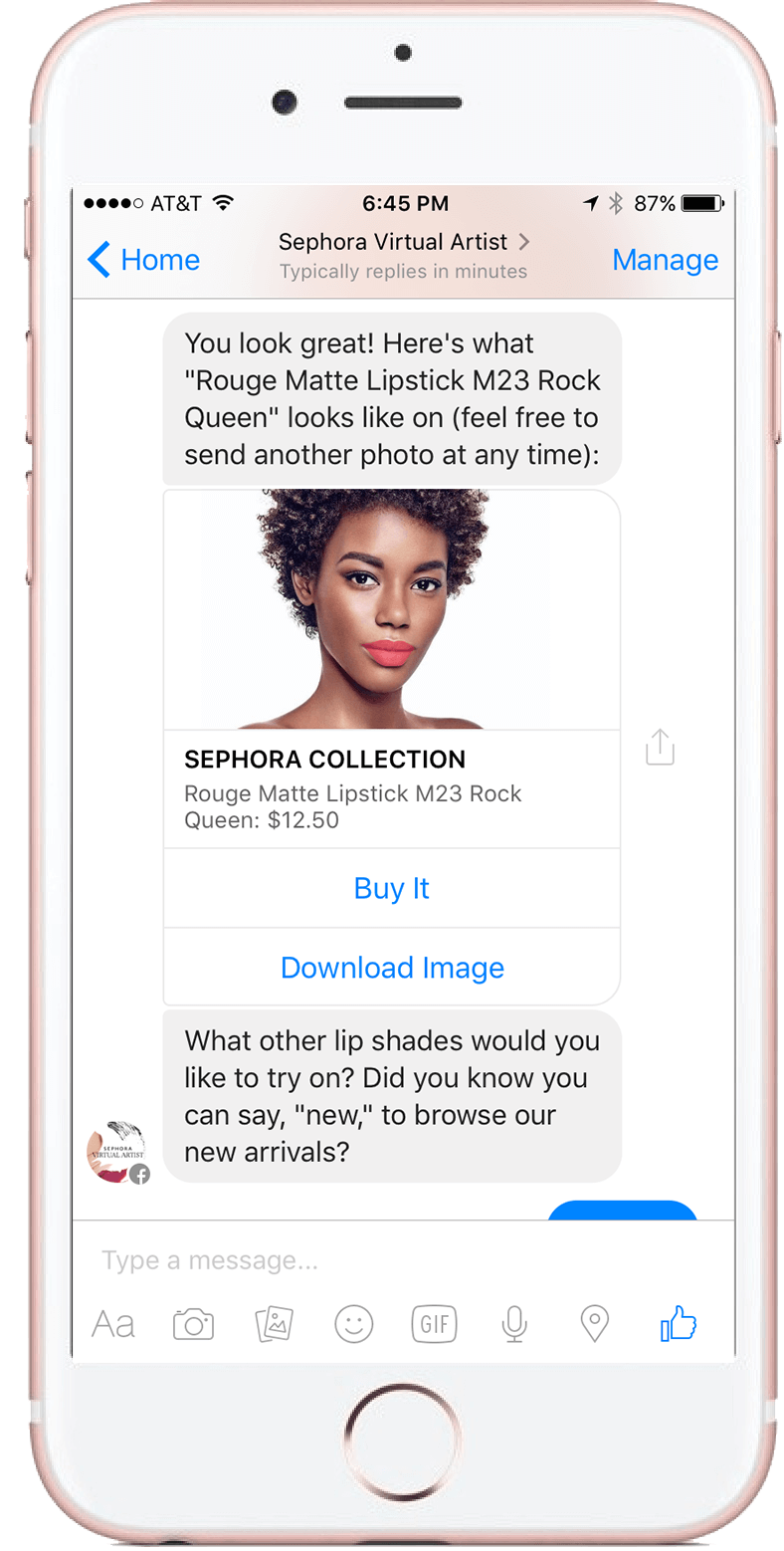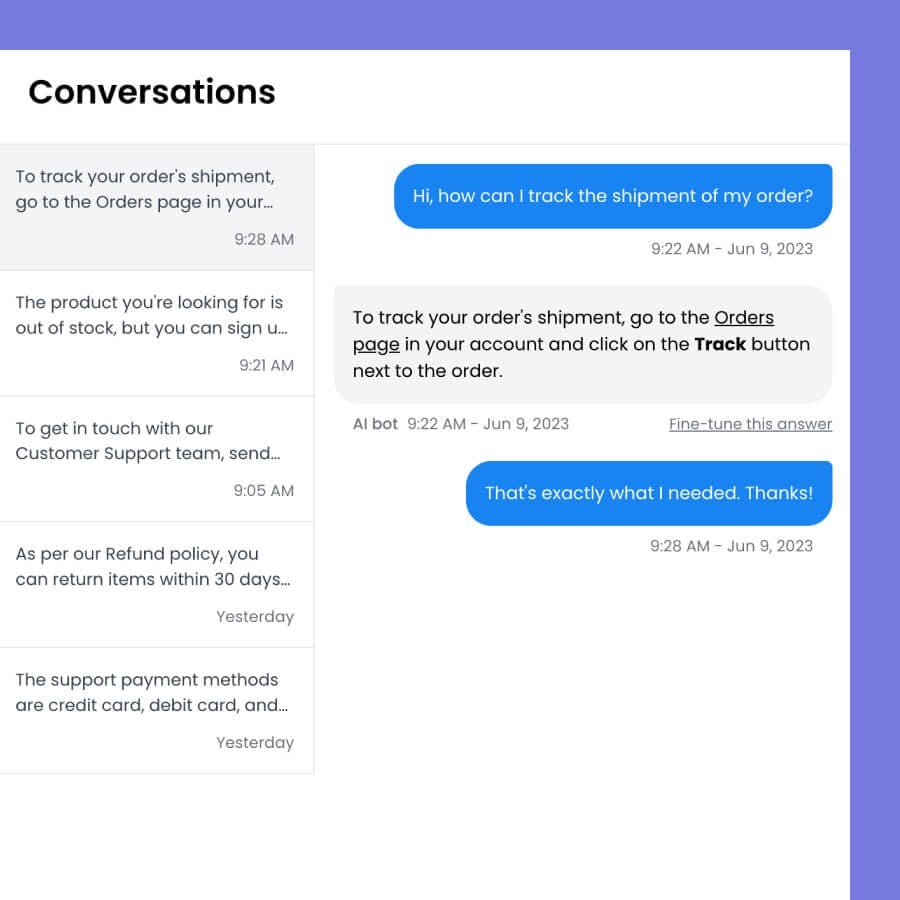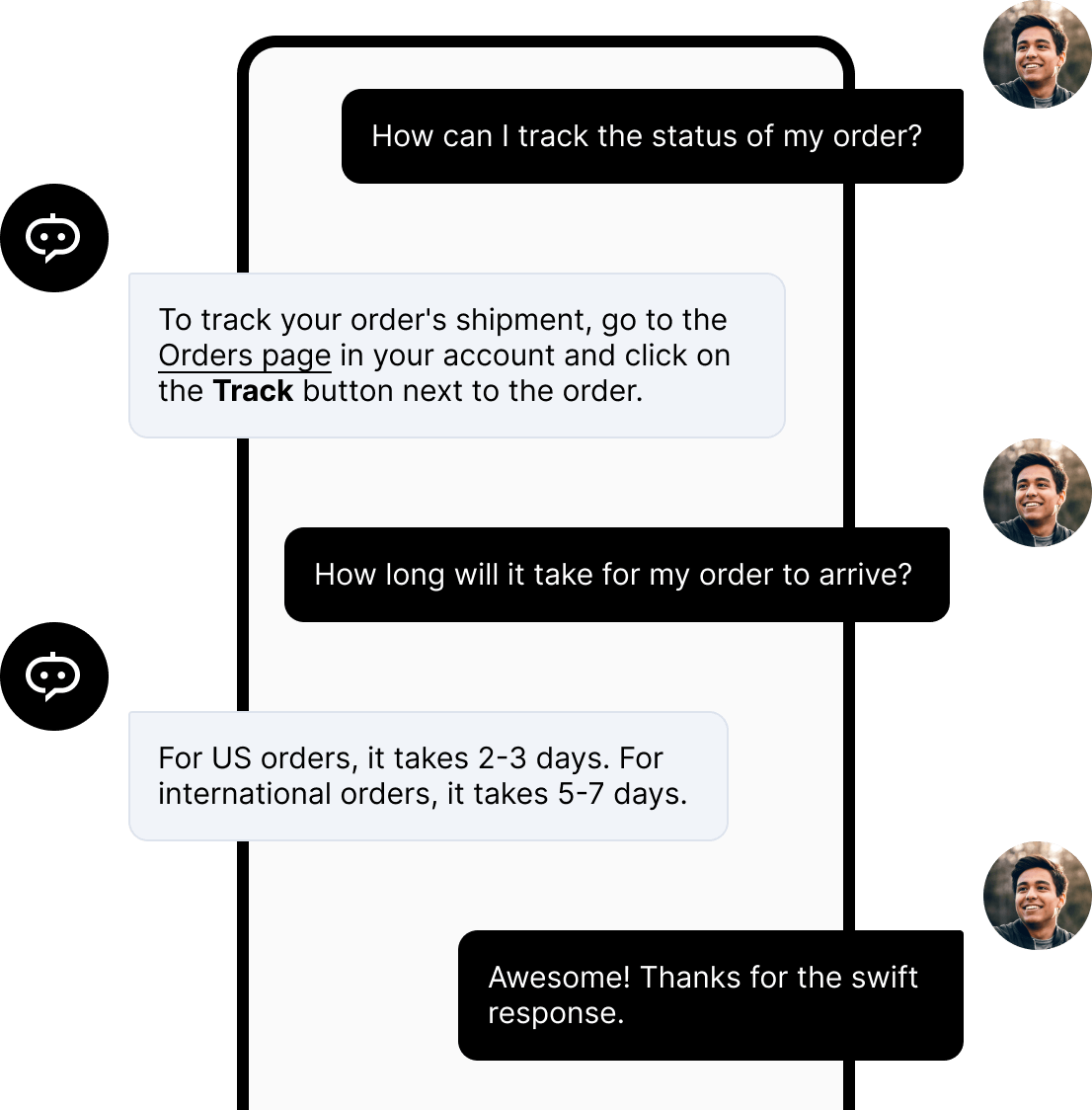The role of chatbots in shaping the future of customer engagement cannot be overstated.
Juniper Research reports that the use of chatbots for retail purchases has increased significantly, with global spending projected to reach $142 billion by 2024. This is a huge leap from the $2.8 billion spent in 2019. These statistics demonstrate a significant shift in how businesses communicate with customers.
As the world of chatbot marketing continues to evolve, understanding its dynamics has become more important than ever. In this Chatling guide, we cover the basics of chatbot marketing to help you take advantage of this rapidly growing trend.
Let’s get started.
- What Is Chatbot Marketing?
- What Are the Benefits of Chatbot Marketing?
- How to Create a Chatbot Marketing Strategy
- 1. Define Your Chatbot Marketing Goals and Use Case
- 2. Choose Your Channels
- 3. Select the Right Technology
- 4. Build Out Your Chatbot Content Strategy
- 5. Align Your Chatbot Persona with Your Brand
- 6. Monitor and Analyze
- Conclusion
What Is Chatbot Marketing?
Let’s start with the basics—what are chatbots?
Chatbots are computer programs designed to simulate conversations with humans in natural language. Chatbot marketing harnesses this technology to engage customers and leads at key funnel stages with automated conversations.
The underlying technology can be simple or complex. Some chatbots rely on (relatively) simple rule-based programs to deliver preset responses, while others use artificial intelligence (AI) to interpret conversations and generate dynamically tailored responses.
Take Chatling, for example.

Our chatbots are trained on your company data to respond accurately to customer inquiries 24/7. There are tons of use cases—from providing customer support to targeting customers with promotions, offers, and product recommendations. You can tailor the persona, syntax, and context of the conversation to match your brand, turning your chatbot into a powerful marketing asset.
Different Types of Chatbots
Rule-Based Chatbots
Rule-based chatbots operate on predefined sets of rules and responses. While they may lack the sophistication of AI-driven counterparts, they are adept at handling straightforward tasks and providing quick responses. These bots are ideal for simple queries and tasks, streamlining customer interactions, and providing instant assistance.
Conversational AI Chatbots
Conversational AI chatbots use advanced machine learning algorithms to engage users in natural, human-like conversations. These bots can understand context, adapt to user preferences, and offer personalized recommendations. They effectively guide users through complex processes, enhance customer experiences, and facilitate seamless transactions.
Voice-Enabled Chatbots
Voice-enabled chatbots leverage voice recognition technology, allowing users to interact through spoken language. These bots cater to users seeking hands-free convenience, serving well in scenarios where multitasking is critical, such as in-car interactions or smart home devices.
Hybrid Chatbots
Hybrid chatbots blend rule-based and AI-driven functionalities, seamlessly transitioning between automated responses and human intervention. Their flexibility ensures that complex inquiries receive human attention while routine queries are handled efficiently. Hybrid chatbots balance automation and human touch, ensuring effective query resolution and a seamless customer experience.
What Are the Benefits of Chatbot Marketing?
Boost Engagement & Sales
Chatbots facilitate real-time and personalized customer interactions, enhancing the overall experience.
For example, take a look at Sephora's Virtual Artist chatbot.

Sephora engages customers and drives sales through virtual makeup trials and personalized recommendations facilitated via chatbot. Unlike traditional marketing campaigns, chatbot marketing allows customers to engage with brands like Sephora more meaningfully.
Gain Insights From Conversations
Chatbots are crucial in providing valuable insights to businesses beyond their immediate customer interactions. They serve as data mines, collecting and analyzing vast amounts of information from conversations with users.

This data can be used to gain deeper insights into customer preferences, behaviors, and trends. Businesses can identify patterns, understand customer needs, and make informed decisions to improve their products, services, and overall customer experience by analyzing the conversations. Chatbot data can also help identify areas for process improvement and optimize operational efficiencies within the organization.
Improve Lead Qualification
Chatbots can help in lead qualification by automating the process of engaging with potential customers and gathering relevant information.
By asking qualifying questions and comparing responses to predefined criteria, leads can be categorized as either qualified or unqualified. Chatbots offer a way to increase efficiency, providing instant responses and personalized interactions while allowing timely follow-up actions, such as automated emails or scheduled calls. Additionally, chatbots enhance customer experiences, generate high-quality leads, and save costs by automating repetitive tasks.
How to Create a Chatbot Marketing Strategy
1. Define Your Chatbot Marketing Goals and Use Case
Begin by identifying clear objectives for your chatbot.
Are you aiming to enhance customer support? Boost sales? Gather customer insights? Define a specific use case that aligns with your business goals. For instance, a retail business might want a chatbot to assist customers with product recommendations and purchases.
And once you have a goal, choose the metrics you’ll use to measure success. These will vary depending on your use case.
Sales Success Metrics
- Average order value
- Customer satisfaction scores
- Total sales conversions
Customer Support Success Metrics
- Resolution rate
- Mean time to resolution
- Deflection rate
- Average response time
- Customer satisfaction scores
2. Choose Your Channels
Now it’s time to think about where your chatbot will operate.
Your website is a great start—and for many businesses, it’ll be the only channel your chatbot needs to cover. That said, there may be other channels you use to communicate with customers, such as:
- Slack
- SMS
- Facebook Messenger
Not all chatbots will integrate with all channels, so it’s important to map these out before starting the search for a chatbot marketing tool.
3. Select the Right Technology
Choosing the right technology is crucial.
Platforms like Chatling offer AI chatbots that can be tailored to your website content and resources. This technology ensures the chatbot provides accurate and contextually relevant user responses, enhancing customer satisfaction.
Below are key features for a chatbot for marketing you should be looking at:
- Integration with data sources: Ability to train the chatbot using various data sources such as FAQs, sitemaps, documents, and website content.
- Customization options: Ability to modify the design of the chatbot widget to match the website theme, personalize the logo, text color, chat box width, and more.
- Easy website integration: Seamless integration of the chatbot onto multiple websites without the need for coding.
- Conversation insights: Monitoring chatbot performance, tracking conversations to understand customer requests, identifying inaccuracies in AI-powered responses, and fine-tuning the bot with additional training if necessary.
- Multilingual support: Capability to understand and respond to user questions in different languages.
- Lead collection: Displaying forms within the chatbot to gather lead information such as name, email address, website URL, and more.

Chatling offers all these features (and more) to give businesses a fully-featured, intuitive chatbot solution. AI-powered responses and various training options make it easy to customize the chatbot for different users and use cases.
Plus, with multilingual support, you can open up new markets worldwide!
4. Build Out Your Chatbot Content Strategy
Map out the types of interactions your chatbot will handle. Create a comprehensive list of frequently asked questions and potential customer queries. This forms the foundation of your chatbot's knowledge base, enabling it to provide accurate and helpful responses.
The backbone of a successful chatbot lies in its ability to provide relevant and accurate information. Develop a comprehensive content strategy by listing common customer questions and potential scenarios. Utilize your chatbot's knowledge base to ensure it's equipped with answers that reflect your brand's expertise and understanding of customer needs.
5. Align Your Chatbot Persona with Your Brand
Develop a chatbot persona that resonates with your brand's tone and values. Whether your brand is formal, friendly, or playful, ensure your chatbot's personality aligns seamlessly. This consistency reinforces brand identity and fosters trust with customers.
Like human interactions, chatbot interactions should align with your brand's personality. Whether your brand is known for its professionalism, warmth, or humor, ensure your chatbot's responses mirror these qualities. This alignment reinforces brand consistency and fosters a stronger connection with customers.
Chatling’s Instructions feature can help align your chatbot’s persona with your brand by providing guidelines and rules to follow when interacting with users. These instructions can include information about the tone, language, and style the chatbot should use when communicating with users and any specific topics or subjects that the chatbot should avoid.
By following these instructions, the chatbot can ensure that its responses are consistent with the brand’s values and messaging, helping to create a seamless and cohesive user experience.
6. Monitor and Analyze
The last step involves closely tracking and evaluating your chatbot's performance, gathering valuable data and insights on user behavior, preferences, and engagement levels. To monitor the data on user behavior, preferences, and engagement levels, you can track various metrics such as the number of interactions, response times, user satisfaction ratings, and conversion rates.
Interpreting these metrics involves analyzing patterns, trends, and correlations to gain insights into user interactions and identify areas for improvement. To optimize your chatbot’s performance, you can experiment with different conversation flows, adjust response strategies based on user feedback, and continuously iterate and refine the chatbot’s behavior to better meet your marketing goals.
Conclusion
Chatbots have become increasingly important in improving interactions and business outcomes. This guide emphasizes the significant impact of chatbot marketing, detailing its growth and various applications. We have discussed the range of options available, from rule-based to conversational AI and voice-enabled chatbots, and how they can be customized to engage with different audiences.
At Chatling, we offer businesses a simple, user-friendly solution that empowers marketers to automate and enhance customer interactions. With AI chatbots trained on website content, Chatling unlocks the potential for 24/7 personalized customer interaction, reduced support workloads, and improved resolution rates.
Start your transformation today by signing up for a free trial.
